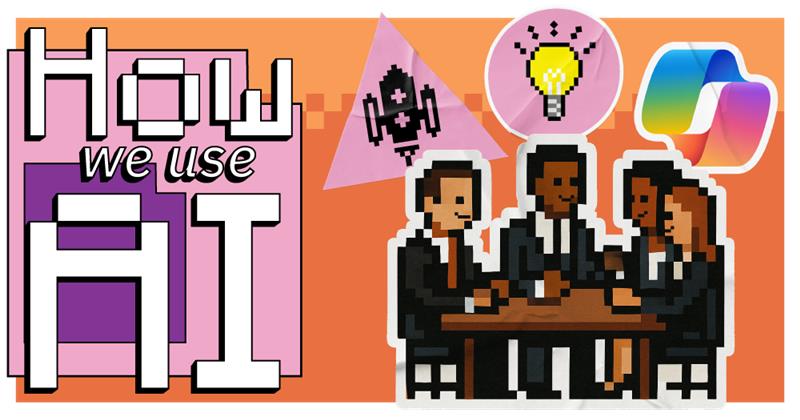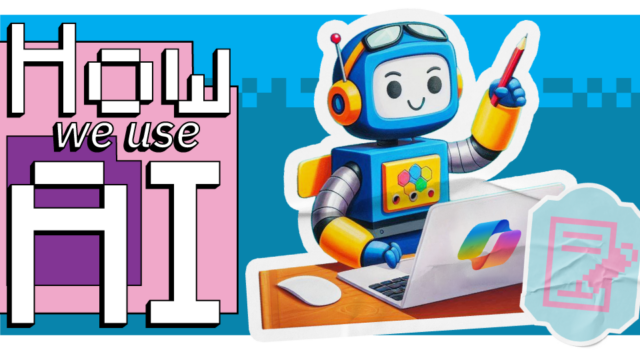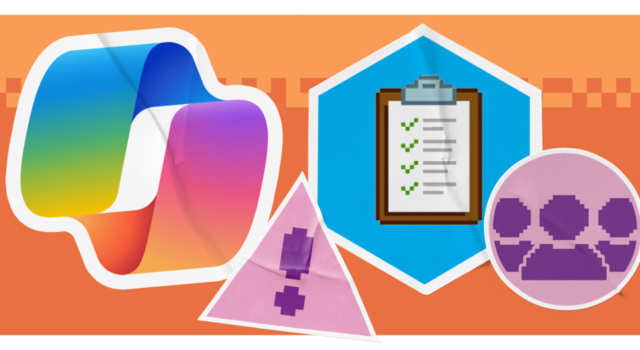We’re often told about the significant advantages AI can bring, but being able to turn that into action is no mean feat.
While many organisations have begun to explore AI, the sticking point is often finding tangible use cases internally and scaling them across departments.
This is something we faced ourselves internally. While some people had begun to discuss and experiment AI, we needed to take the next step to drive adoption and get greater benefits. So, we brought in a tailor-made AI initiative.
This is everything we included in our initiative to drive cross-organisation change and realise the full potential of AI.
The challenge
As AI continues to reshape the world of work, we recognised the need to stay ahead – not just technologically, but culturally.
We had already run an internal AI advocacy group for many months, which gave select employees across different teams the opportunity to share successes and discuss challenges. However, the next step was taking this discussion and turning it into real ways our employees could utilise AI in their daily work to save time.
As Tristan Shortland, Chief Technology Officer at Infinity Group, summarises: “The advocacy group was great for early awareness. But to turn that into action, we had to go down a level – into teams and into real use cases.”
The challenge we faced was to bridge the gap between interest and implementation, especially for non-technical teams who were new to AI. This meant empowering people to feel confident experimenting with AI and uncovering beneficial ways to use it.
The solution: an AI initiative
In order to take the next step in our AI journey, we decided to launch a new AI initiative, specifically designed to build on the momentum gathered so far.
The focus of the initiative is embedding AI into how we work. This meant bringing technology and culture together, ensuring people are growing their awareness of AI possibilities in a way that tackles fear or resistance.
The initiative was also created to be a structured, inclusive programme that empowers every employee to explore how AI can support their role, no matter their background or skill level.
Louise Otton, Head of Talent Development and Culture at Infinity Group, explains: “We wanted to create a programme where everybody has access to the skills they need to learn. We are meeting them where they’re at, meaning everyone can develop regardless of their AI experience so far.”
The components of the AI initiative
The initiative covers a range of goals and tasks, all designed to help people apply AI more effectively in their roles.
The first part of the initiative was conducting personal AI audits. Members from every department were encouraged to gather use cases for AI within their day-to-day. Rather than thinking about the technicalities, they had to think about ideal uses that could strip away repetitive or manual work. This removed barriers and enabled people to think more creatively about how AI would help them.
Tristan explains: “The point of this is to get people understanding what’s possible, what tools they’ve got available and how they can use AI as part of the solution.”
The initiative also includes tailored training, aligned with Microsoft’s own AI learning paths. Employees have access to beginner, intermediate and advanced digital courses, allowing them to get training specific to their skill level. This means everyone can progress.
An AI-driven culture
Underpinning all of this is an emphasis on an AI-driven culture. Resistance to AI naturally exists, and many people may be scared to get started. Our mission was to create a space for people to explore AI without fear or pressure.
To do this, we have encouraged peer-to-peer learning, allowing people to share their difficulties and understand how others have improved their AI usage. We also celebrate successes to pique interest and encourage others to follow suit.
As Louise says, ““It’s about being curious: encouraging people to try things out and to share what they’ve learnt. Because, ultimately, we’re all learning as we go.”
Ensuring secure AI use
Finally, governance is key to everything. We have a set AI policy that ensures responsible use. This includes dictating what AI tools are safe to use and giving recommendations as to what should be fed into them (such as not inputting sensitive data).
This aligns with Microsoft’s Centre of Excellence principles, designed to create secure foundations for AI adoption and reducing barriers to innovation.
The end vision
While the AI initiative is in an early stage, real use cases are already emerging from across the business, from automating admin to enhancing performance reviews. Employees are already coming up with creative use cases that could stand to save them significant time.
The ideal outcome for this initiative will be for everyone in the organisation to have AI embedded into their daily jobs, allowing them to save time. This creates more space for the human side of work: collaboration, culture and innovation.
Louise emphasises: “We’re not trying to replace roles. We’re trying to enhance them. This means our people can do bigger and better things.”
By empowering people to use AI confidently and securely, we also hope to reap the benefits as an organisation. This should include improving productivity rates, driving employee satisfaction and taking strides forward by giving people the team to think creatively and strategically.
Next steps
As people begin to come up with AI use cases, our focus as an organisation is prioritising them and bringing them to life. This will involve technical input from relevant teams – but we also want to empower people to create their own AI bots.
By giving people access to user-friendly tools, like Copilot Studio, we want them to improve their own AI skills and bring use cases to reality without having to wait for technical resource.
As people become more confident, we expect more and more use cases to emerge. This will enable us to evolve as the technology does, ensuring we are an AI-driven organisation that continually experiences the advantages of time savings, accuracy and efficiency.
This will be held against a backdrop of storytelling and community, making AI adoption feel real, relevant and rewarding to people across the organisation.
Our top tips for organisations looking to increase AI adoption
If you’re looking to take the next step with AI in your organisation, these are some top tips based on what we’ve learned so far.
1. Build on what you’ve started
If you’re already having conversations with AI, that’s a great starting point, even if they haven’t translated into action yet. Build on any momentum you’ve gained already, looking at what the next step means and any barriers that are preventing you actually using AI. Turn this into an actionable program to tackle resistance and scale usage.
If you haven’t even thought about AI, it’s worth starting by creating an internal AI forum to discuss. This can help you gauge attitudes and define early use cases.
2. Invest in change management
Using AI daily is a significant behavioural change. So, change management is key. Tristan states, “Don’t underestimate the scale of the change management exercise. This is an entirely new technology for most people, so it’s bigger and more complex than a typical rollout”.
For effective change management, you’ll need clear communication that emphasises the value behind the initiative and give people time to adjust. Executive sponsorship is also key for influencing the rest of the business and ensuring it remains a priority.
3. Create safe spaces to experiment
One of the common barriers to AI is that people don’t know where to start. They’re scared of getting it wrong. This is why having an effective cyber security infrastructure and AI policy is crucial. It enables people to freely experiment, without the risk of them putting your business in danger.
You also need to allow people the time to experiment. Many will be busy in their other work, so ensure they can allocate time to AI without fear of repercussion.
4. Celebrate small wins
While there is plenty of data out there about time saved through AI or efficiency level increases, these mean nothing to the average person who doesn’t know how to get started. This is why peer stories are more powerful than stats.
Create channels where people can share their AI wins, whether it’s through an intranet or a weekly meeting. By celebrating successes, people can get inspired and ask questions, allowing everyone to learn from each other.
5. Keep it human
As Louise says, “AI can’t create a culture. Humans can. And we need people to have time to do that.”
This is why it’s crucial never to see AI as the answer to everything. Human intervention will remain crucial. This is the message you need to deliver to your staff to overcome resistance and show them they aren’t being replaced.
By shifting more work towards AI, humans are also free to do more strategic, creative and rewarding tasks. This will create more satisfied workforces that perform better. So, remember to continue to demonstrate this vision to your employees, which emphasising their role in the AI-future.
Begin your AI journey
Knowing how to implement AI effectively is key to gaining the rewards you’ve heard about. A phased roadmap that addresses change management, security and governance, data preparation and more.
Our ‘Road to AI’ guide contains step-by-step actions for effective AI implementation, from goal setting and tools to pilot phases and smart scaling. Download your copy to kickstart your AI journey.





